|
|
Updated as per http://biological-diversity.info/sphingidae.htm (Belize), November 2007
Updated as per Fauna Entomologica De Nicarauga, November 2007
Updated as per The Known Sphingidae of Costa Rica, November 2007
Updated as per personal communication with Paul Hoekstra, Yucatan, Mexico, August 17, 2011; October 1, 2011
Updated as per personal communication with Ben Trott (Playa del Carmen, Quintana Roo, Mexico); February 27, 2012; April 21, 2012
|
Manduca sexta sexta
man-DOO-kuhmm SEX-tuh
Butler, 1877
The Carolina Sphinx
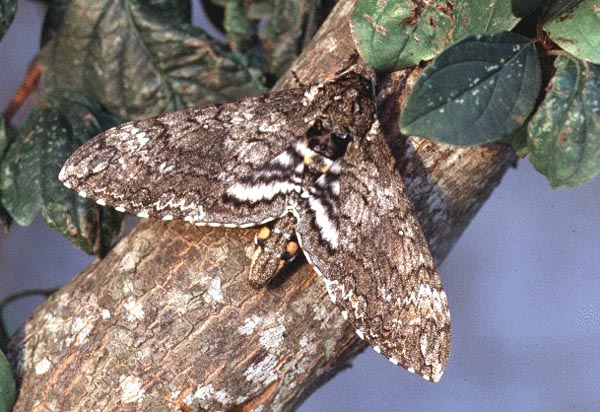
Manduca sexta sexta by Thomas Hörbrand.
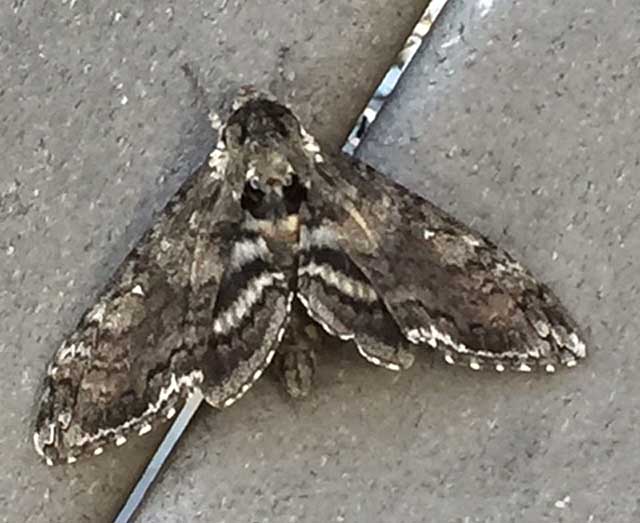
Manduca sexta, Dover, Strafford County, New Hampshire,
August 24, 2019, Rosy & Janice.
This site has been created by Bill Oehlke.
Comments, suggestions and/or additional information are welcomed by Bill.
TAXONOMY:
Family: Sphingidae, Latreille, 1802
Subfamily: Sphinginae, Latreille, [1802]
Tribe: Sphingini, Latreille, 1802
Genus: Manduca Hubner, 1807 ...........
Species: sexta sexta Butler, 1877
|
DISTRIBUTION:
The Carolina Sphinx, Manduca sexta sexta (Wing span: 3 3/4 - 4 3/4 inches (9.5 - 12 cm)),
flies in tobacco fields, vegetable gardens, and a wide variety of habitats from Massachusetts (two Maine larvae sightings in 2002:
Berwick and Bailey's Island) west across southern Michigan to Minnesota, central Colorado, and northern California;
south to Florida, the Gulf Coast, Texas, New Mexico, Arizona, and southern California. It also ranges south through
Mexico: Quintana Roo (BT, probably throughout Mexico;
Belize: Corozol, Orange Walk, Cayo, Stann Creek;
Honduras: Francisco Morazan;
Nicaragua: Esteli, Matagalpa, Leon,
Managua, Masaya, Granada, Chontales, Zelaya, Rio San Juan;
Costa Rica: Guanacaste, Alajuela,
Lemon, Puntarenas, Heredia;
and the West Indies to Argentina.
Many thanks also to Jeff and Hillary Pierson of Roseville, Placer County, California, who provide the following image of a Manduca sexta larva.
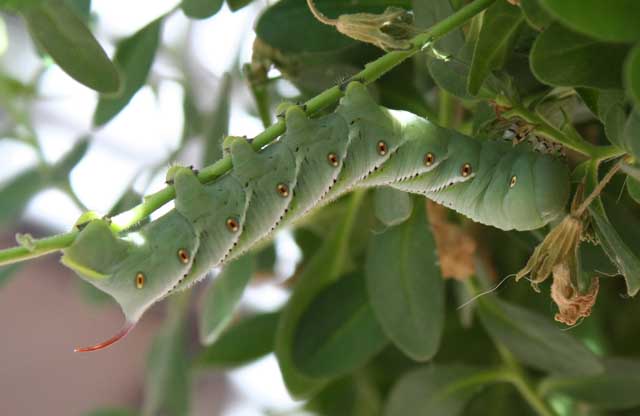
Manduca sexta fifth instar, Roseville, Placer County, California,
September 7, 2012, courtesy of Jeff and Hillary Pierson.
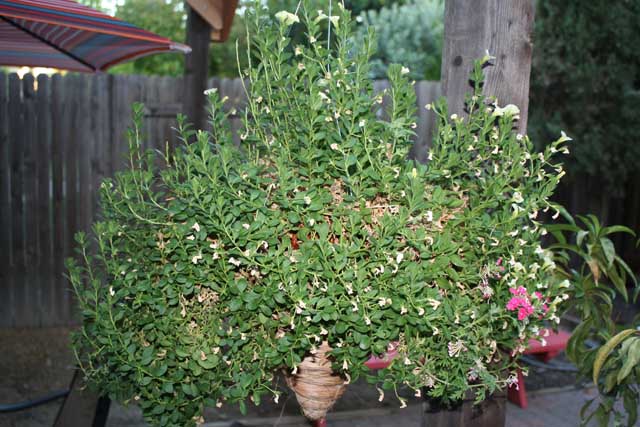
Manduca sexta larva host, Roseville, Placer County, California,
September 7, 2012, courtesy of Jeff and Hillary Pierson.
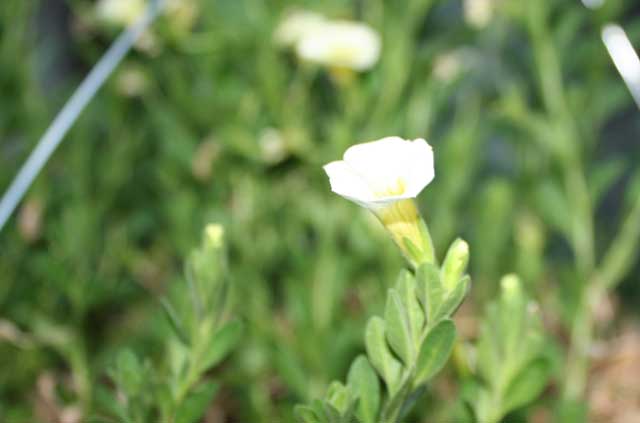
Manduca sexta larva host, Roseville, Placer County, California,
September 7, 2012, courtesy of Jeff and Hillary Pierson.
James P. Tuttle's The Hawk Moths of North America is an excellent reference. His distribution map for Manduca sexta for California
shows western Placer County as the edge of the northeastern distribution for Manduca sexta in California. I wondered if possibly an egg of an immature larva
had been imported on the store purchased host, but Jeff indicates the potted plant was purchased at Home Depot in May, around Mother's Day, and the larval image was taken in
early September, September 7, 2012. Our conclusion is that the egg was deposited in Placer County, probably some time in late July or in very early August.
Roseville is near the center of Placer County, probably slightly east of the range indicated on James P. Tuttle's distribution map.
I believe the host plant is a Petunia species in the Solanceae family.
Manduca sexta is an irregular migrant to southern Ontario, Canada.
Jack P. Brooks sent me the larval image, linked, from London, Ontario, September 1, 2008.
Visit Manduca sexta, Wauchula, Hardee County, Florida, June 6, 2011, Greg Roehm.
Visit Manduca sexta, Long Key Nature Center, Broward County, Florida, June 15, 2008, Kelli Whitney.
Visit Manduca sexta, Yucatan, Mexico, August 17, 2011, courtesy of Paul Hoekstra.
Visit Manduca sexta, Cedar Rapids, Linn County, Iowa, September 2, 2011, Thomas Jantscher.
Visit Manduca sexta, Chatham, Kent County, Ontario, September 6-8, 2010, 9:01-9:13pm, John Van der Pryt.
Visit Manduca sexta, Lake Waco Wetlands, McLennan County, Texas, September 15, 2012, Eric Runfeldt.
Visit Manduca sexta, prey to Scelopterus olivaceus, Brownsville, Cameron County, Texas, October 1, 2009,
courtesy of Gus A. Rentfro.
The abdomen usually has six pairs of yellow bands,
broken across the back. The sixth set of markings is quite small.
The upperside of the forewing has indistinct black, brown, and
white markings. The upperside of the hindwing is banded with black
and white and has two black zigzag median lines
that are very close together with hardly any white showing between
them. Wing fringes on the forewing are spotted
with white. Image courtesy of John Himmelman, Connecticut,
July 1999. | 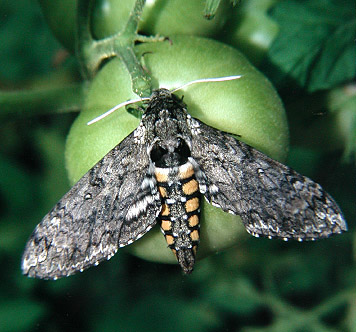 |
FLIGHT TIMES: Manduca sexta sexta adults fly in
several broods throughout the year in Florida,
several broods from April-October in Louisiana, and at least two
broods from May-October in the remainder of their range.
Paul Hoekstra reports an August flight in Yucatan, Mexico.
The moth to the right is courtesy of Doug Aguillard, National City
(San Diego County), California, July 17, 2005. |
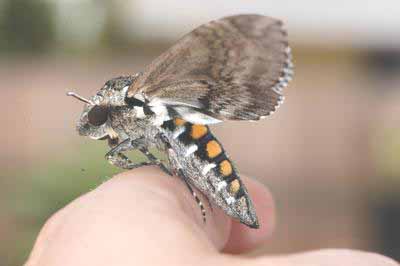 |
ECLOSION:
Pupae probably wiggle to surface from
subterranean chambers just prior to eclosion.
SCENTING AND MATING:
Females call in the males with a
pheromone released from a gland at the tip of the
abdomen. Adults nectar, beginning at dusk, from flowers including
Japanese honeysuckle (Lonicera japonica), moonflower
(Calonyction aculeata), and petunia (Petunia hybrida).
Jeff Swick has sent some beautiful images of Manduca sexta
nectaring at bouncing bet (Saponaria officinalis) in Flatbrookville, Sussex County, New Jersey, July 2008.
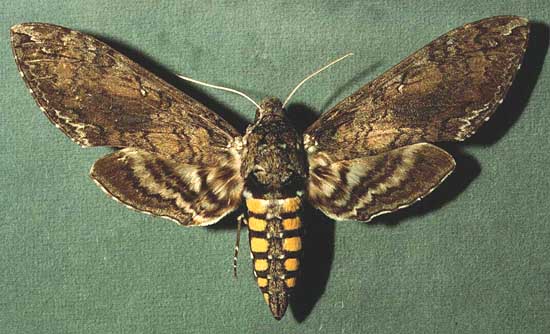
Manduca sexta sexta female courtesy of Dan Janzen.
EGGS, LARVAE, PUPAE:
Females lay green
eggs singly and occasionally on the upperside of host plant
leaves, but most ovipositing is done on the undersides of foliage.
The first instar larvae have relatively long horns and large heads
with "powerful" mandibles and quickly "green up"
once their intestines fill with foliage.
|
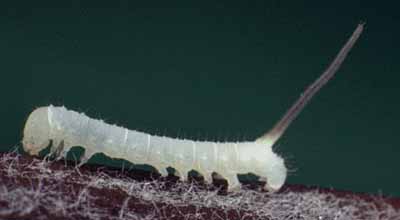 |
Tobacco Hornworms, equipped with a red-tipped horn at the end of the
abdomen, are true gluttons and feed on
tobacco and tomato, and occasionally potato and pepper crops and
other plants in the nightshade family (Solanaceae).
Wendy Mechaber, Ph.D., University of Arizona wrote me on October 21, 2002,
" We know that in Southern Arizona, the moths lay eggs on plants in
the Proboscidea family (See: Mechaber, WL and Hildebrand, JG. 2000.
Novel non-solanaceous hostplant record for Manduca sexta
(Lepidoptera:Sphingidae)
in the Southwestern United States.
Annals Ent Soc Amer. 93(3):447-451.)"
One or two mature larvae can quickly strip a regular sized tomato
plant.The larvae are regarded as pests in gardens.
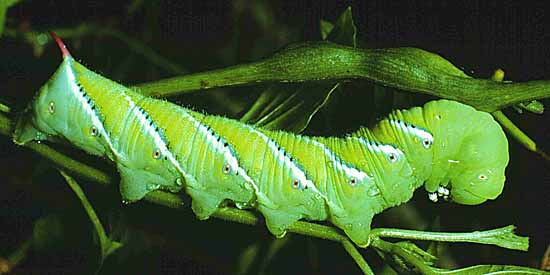
Manduca sexta
sexta larva courtesy of Dan Janzen.
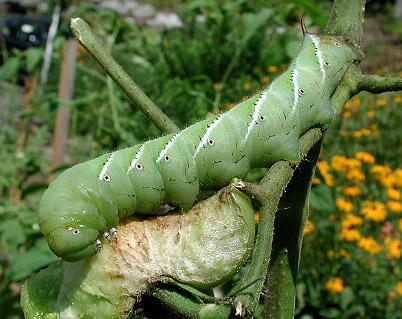 |
Larvae are usually quite content with foliage, but once that is gone,
green tomatoes become fair game.Image courtesy of John Himmelman,
Connecticut, August 14, 2003. This species is highly susceptible
to attacks by parasitic wasps and flies. I often get id requests
with pictures showing small parasite cocoons on the backs of larvae. |
Manduca larvae excavate chambers under the soil
and pupate while lying on their backs, a practice which probably
offers the feeding
tube much needed protection.Pupae courtesy of Björn Trosowski
| 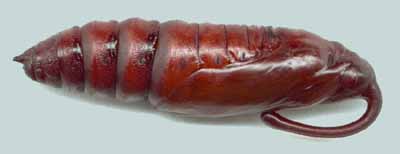 |
The red horn helps to identify this species with its many subspecies.
Below is nominate sexta, Mexico, courtesy of Jean Haxaire.
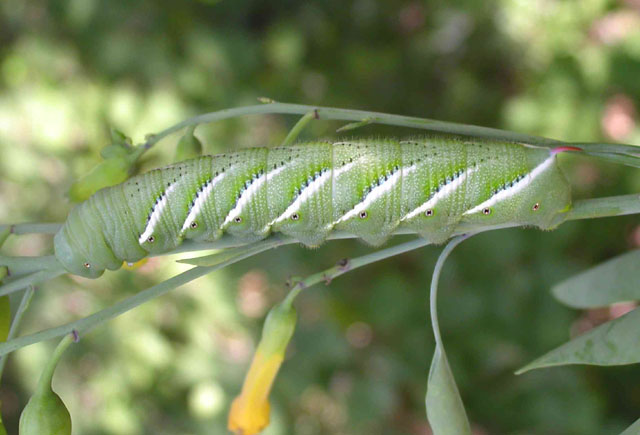
Visit Manduca sexta larvae, San Benito County, California, courtesy of Eric Brunnemann and
Paul Johnson.
Visit Manduca sexta larva on habenero pepper, Rehobeth, Houston County, Alabama, September 9, 2008, Joel Szymczyk
Visit Manduca sexta on tomato plant, Washington County, Rhode Island, September 1, 2009, Ryan Saint Laurent.
Visit Manduca sexta on tomato plant, and excavating, Berkeley, Alameda County, California, August 5, 2011, Grace Munakata.
Visit Manduca sexta fifth instars on pepper plants, Phoenix, October 19, 2011, Cynthia Kraft
Visit Manduca sexta larva, Shreveport, Caddo Parish, Louisiana, June 27, 2010, Jeff Trahan
For care of "found larvae/caterpillars" visit Manduca sexta larva, central Texas, August 21, 2008, Trina Woodall.
Grace Munakata sends many images of Manduca sexta larvae devouring tomato foliage and excavating tunnels in soft earth.
Grace recently had a very interesting experience with the pupae that she overwintered. Check out the link.
Ben Trott writes from Quintana Roo, Mexico, "Manduca sexta (x3). These larvae were also parasited, I think this is because they feed openly on tomato
plants and are very exposed."
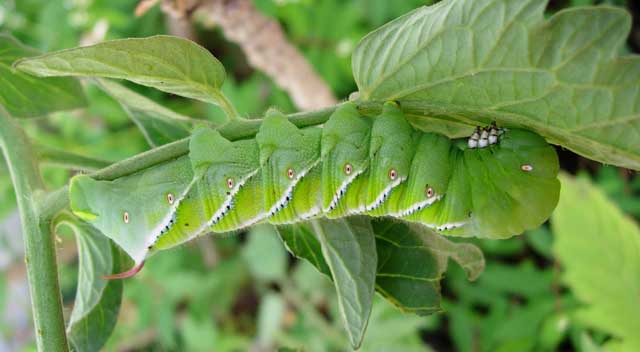
Manduca sexta fifth instar, Playa del Carmen, Quintana Roo, Mexico,
courtesy of Ben Trott.
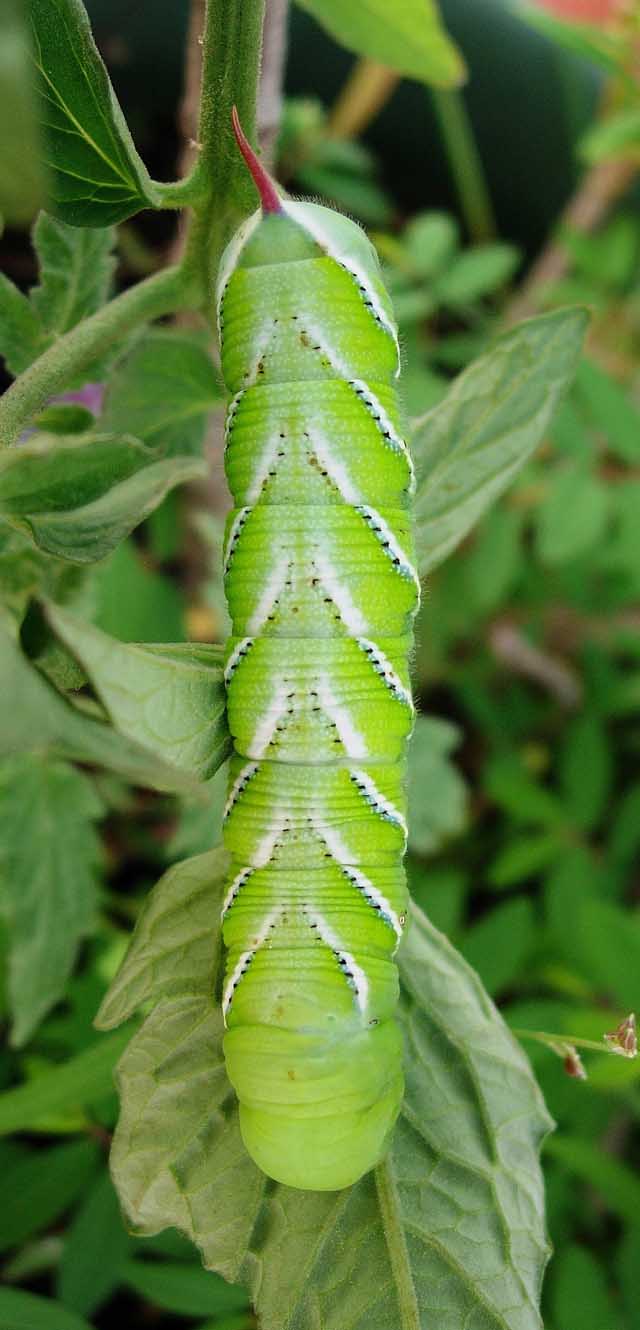
Manduca sexta fifth instar, Playa del Carmen, Quintana Roo, Mexico,
courtesy of Ben Trott.
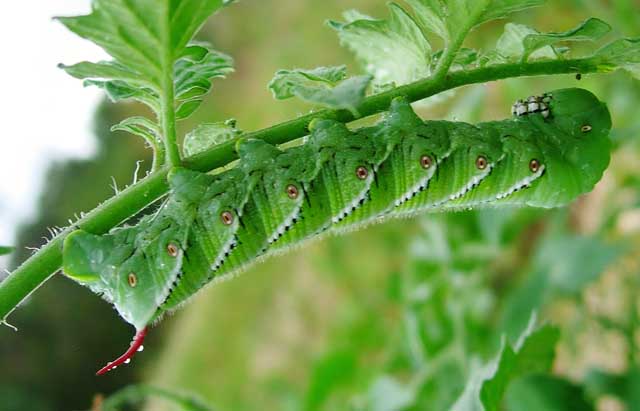
Manduca sexta fifth instar, Playa del Carmen, Quintana Roo, Mexico,
courtesy of Ben Trott.
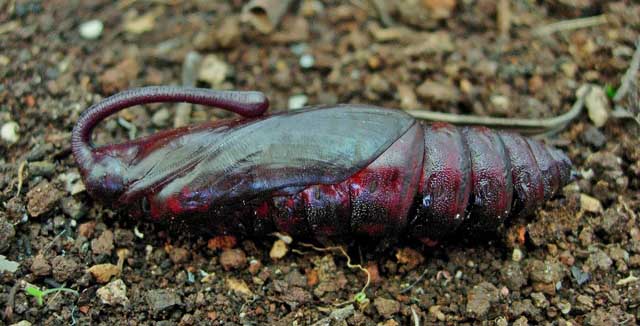
Manduca sexta female pupa, Playa del Carmen, Quintana Roo, Mexico,
courtesy of Ben Trott.
Visit Manduca sexta female, Playa del Carmen, Quintana Roo, Mexico, courtesy of Ben Trott.
Return to Sphingidae Index
Return to Sphingini Tribe
Use your browser "Back" button to return to the previous page.
This page is brought to you by
Bill Oehlke and the
WLSS. Pages are on space rented from Bizland. If you would like
to become a "Patron of the Sphingidae Site", contact Bill.
Please send sightings/images to Bill. I will do my best to respond to
requests for identification help.
Enjoy one of nature's wonderments: Live
Saturniidae (Giant Silkmoth) cocoons.
 | 
Show appreciation for this site by clicking on flashing butterfly to the left.
The link will take you to a page with links to many insect sites. |


















